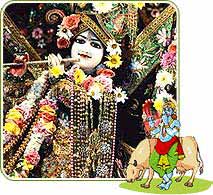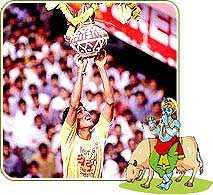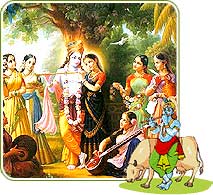is a group of some grassroot level youth social workers(Ashish Kumar, Urvashi Sharma, Laxmi, Harsh, Yogita pandey ), who had already set a place in the development sector and are well known in their fields who are full of experience and dedication. On the other hand we have some enthusiastic students (Salil, Uday Raj, Neelkamal) of development studies (named Social Engineering, a specialized master's degree program which is producing development professionals who have a balance of understanding of the sector as well as the tools required for better performance. They have skills of NGO management, Project implementation etc , field work approach and attitude)
SHVF is also in touch with dozens of Reputed organizations working for Human and Humanity.
Health & Nutrition.
Civic sense------
Civic sense, or rather the lack of it, is a topic that has been widely discussed and argued in India. Somehow, most Indians do not care much for civic sense. And this attitude is prevalent across all sections of society. People today are so driven towards their personal goals that civic sense as an ethic has become a low priority, almost a nuisance.
But this attitude could be harmful for India in the long run. Civic sense has dropped to an all-time low in recent years, as is rather obvious from the current state of society. Let's see what people and specifically parents can do to curb this downswing.
What is Civic Sense? Civic sense is nothing but social ethics. It is consideration by the people for the unspoken norms of society. A lot of people assume that civic sense is just about keeping the roads, streets and public property clean. But civic sense is more than that; it has to do with law-abiding, respect for fellow men and maintainingdecorum in public places. A lot of foreign countries function in a smooth manner because of the strong civic sense amongst its people.
With the exception of a couple of lessons in school, not a lot of attention is given to civic behaviour. Schools and homes do not teach their children about the importance of civic sense and how it could make a difference to the country as well as the quality of their lives. Let's see why civic sense is so important
.
Why is Civic Sense important? Separatism, vandalism, intolerance, racism, road rage etc. are all examples of lack of civic sense. People are becoming less and less tolerant of each other, of other's cultures, backgrounds, and other similar traits. India has really diverse people and the need of the hour is general civic sense. It is not uncommon to read or hear about communal friction. Even living in the city has become difficult because people have no consideration whatsoever for fellow city-dwellers. When civic sense is absent in a society, it leads to a lot of problems. Disregard for the law is a primary cause for lacking civic sense. A person who has high civic values does not resort to shortcuts and unethical tactics to get his work done. And being unethical in daily activities does not benefit anyone, as the behaviour only gets emulated by other members of society. Ultimately, the situation will reach a point where hardly anything can be done to restore it. For example, being inconsiderate towards fellow society members will only come right back at you. You have to be social, mature and unbiased when it comes to situations in public. The current state of public transport, for example, is disheartening. And we have no one to blame but ourselves for this condition. There are spit marks, urine, vulgar graffiti, random garbage and overflowing sewers at every nook and corner of India. NO city in this country has managed to fight the menace. It is easy to pin everything on the government, but people must first question themselves and their own civic sense. Roads are not dirty because nobody cleaned it, but because somebody dirtied it in the first place. And such dirt and grime is not acceptable to anybody; it exists only because everybody does it. Even swine flu, which is quickly spreading across the country, was caused by the absence of hygiene. It does not help that people are irresponsible with the disposal of bio-waste. And people continue to indulge in such behaviour in spite of knowing the harmful effects. Using 'everybody does it' is an excuse and only an excuse. In India, even prominent personalities indulge in proud displays of lack of civic sense. Take for example, ministers who delay planes with complete disregard for other passengers or companies that freely pollute rivers and lakes. It is difficult for a country to change its mindset when its leaders themselves are setting bad examples, round the clock, all the time.
How can you teach Your Child about Civic Sense?
When you teach your child about civic sense, you also teach him about civic responsibility. Children need to be taught civic sense early because unlike a specific skill, civic sense is a school of thought in itself. It is belief in hygiene, respect for other members of society, and humane behaviour.
So how do you go about teaching your child civic sense? Begin by teaching him to keep his immediate surroundings clean and tidy. If he learns to appreciatecleanliness, he will be able to practice it outside of home as well. Explain to him that just because other people dirty their surroundings does not mean he should too.
Encourage him to mix with people from different backgrounds and not harbour prejudice against them. India is a mix of a variety of people and patience and tolerance in your child will make him more accepted and respected. You can also tell your child about the relevance of different festivals and explain to him the spirit behind each. This way, he will not see the differences but the similarities between his religion and another's.
With such small steps you can teach your child about civic sense and the importance of it in his life. And by teaching your child about civic sense, you are not only making him a better human being but also doing your bit for the future of the country.
Traffic Sense-
We are an independent nation and we have every right to use our independence. Does that indirectly also means we are free of all traffic rules that are set too?
The statistics don’t lie
India holds the dubious crown of being the worst place to drive a car in. 10% of the estimated 1.2 million road fatalities world wide take place in India and the numbers are growing steadily. According to P.K. Sikdar, director of the Central Road Research Institute which is a New Delhi-based traffic consultancy, “More than 80,000 people die every year on Indian roads due to careless driving!” Is there any particular reason why we are such bad drivers? And am I the only one saying it?As a country, we are remarkably lax on rules!
When you have auto rickshaws, private and government buses, private cars, scooters and pedestrians plying on the same narrow roads; you are going to have problems! Drivers break signals, overtake on the wrong side, switch lanes with no signaling, have to brake indiscriminately to deal with animals and people on the road and slow down dangerously to deal with the same people and animals on the road. Some of our roads are not fit to be called roads as pavements don’t exist and they haven’t been renovated since the British Raj. Seatbelts rules don’t exist and are not enforced, mobile usage while driving is common and even drivers with no headlights contribute to the problem. If we had better traffic rules, stringent licensing regulations, and better roads with pavements; I don’t think this same problem would exist!The Pity is that we follow the rules very diligently when we visit other countries in the west. But when it comes to respecting our own beloved India, We dont care a penny to follow the traffic rules.
An increasingly wealthy middle class and increased job stress are also contributing to the problem. When you are dealing with so many hassles on the road, it’s getting increasingly common to have frequent road rage incidents that lead to deaths. This condition is not out of control. We can do something to control the problem but it will mean a major overhaul of the entire existing traffic rules and regulations in India.
SCVF understand its obligations towards traffic rules and firmly believe that traffic sense is also a part of civic sense and it must be taken very seriously. SCVF is advocating for proper implementation of traffic rules by law enforcing bodies and the same every common man must apply their common sense. SCVF is organizing debates and awareness camps for this purpose.
Non ViolenceAt first glance, violence may appear to be a superior technique for resolving conflicts or achieving desired ends because it has obvious and tangible strategies and weapons. Nonviolent techniques are often more difficult to visualise and there is no shortage of moral and practical dilemmas that sceptics are able to raise as impediments to taking nonviolence seriously.
Yet many reasons can be offered for the employment of nonviolence: it is a 'weapon' available to all, it is least likely to alienate opponents and third parties, it breaks the cycle of violence and counter-violence. it leaves open the possibility of conversion, it ensures that the media focus on the issue at hand rather than some tangential act of violence and it is the surest way of achieving public sympathy. Further, it is more likely to produce a constructive rather than a destructive outcome, it is a method of conflict resolution that may aim to arrive at the truth of a given situation (rather than mere victory for one side) and it is the only method of struggle that is consistent with the teachings of the major religions.
In addition there are reasons for the employment of nonviolence that go beyond the conviction that is a useful, or even the only 'correct' method of conflict resolution. Nonviolence can also he the basis for a way of life: it is consistent with a belief in the underlying unity of humankind and it is the only method of action, interpersonal or political, that does not block that path to what has often been called 'self-realisation
Domestic violence is a drastic component which is disturbing the atmosphere of families and it is widely distributed in India. We are constituting Mahila panchayat at small levels as muhalla level, to unite women against domestic violence and to develop decision making power against matters of their own interest.
A healthy mind live in a healthy body, and a healthy body requires good nutrition. For our slum schools we are approaching the concern authority to allow the mid day meal because we believe that the children are the future of the country and mid day meal will provide them good nutrition.


